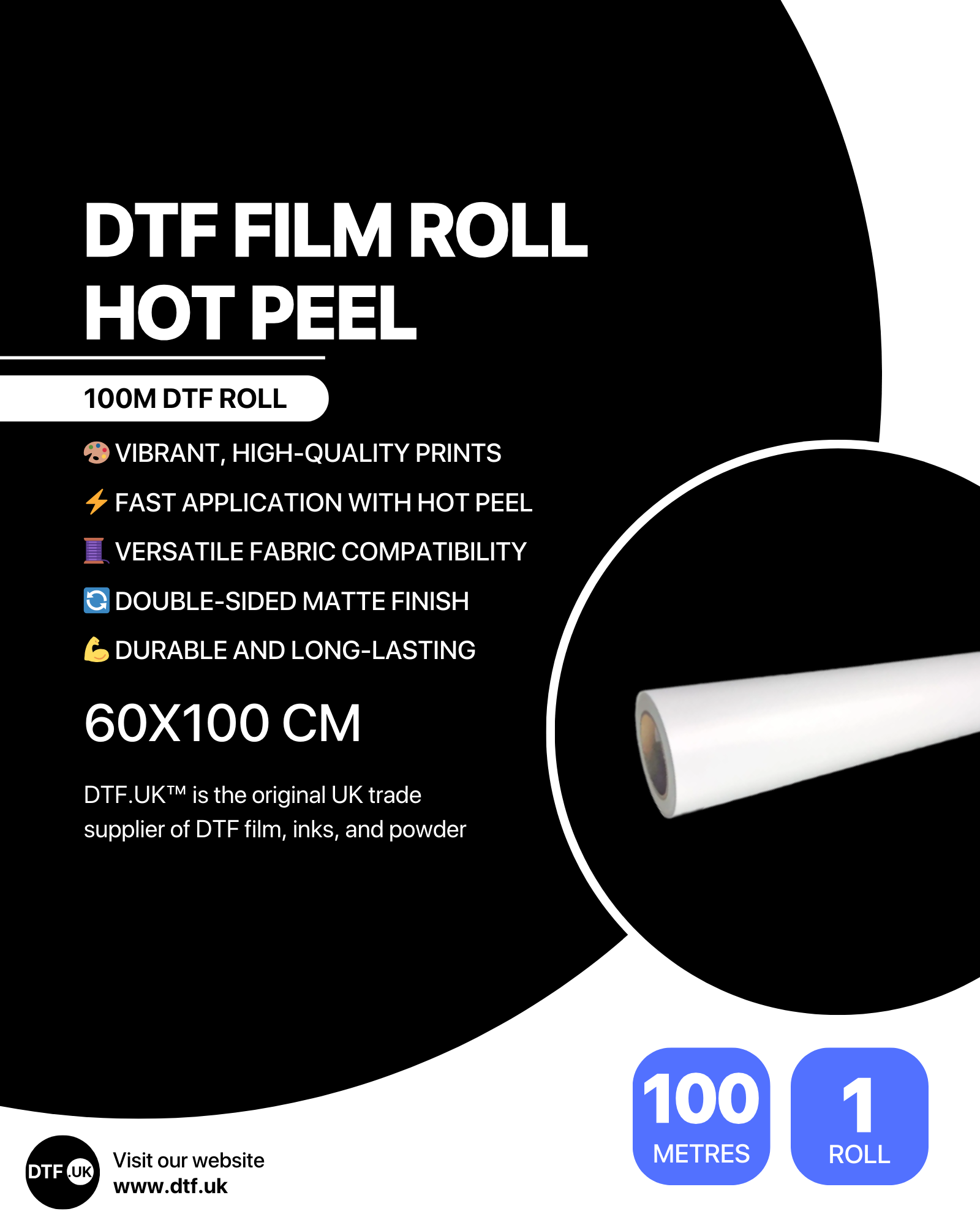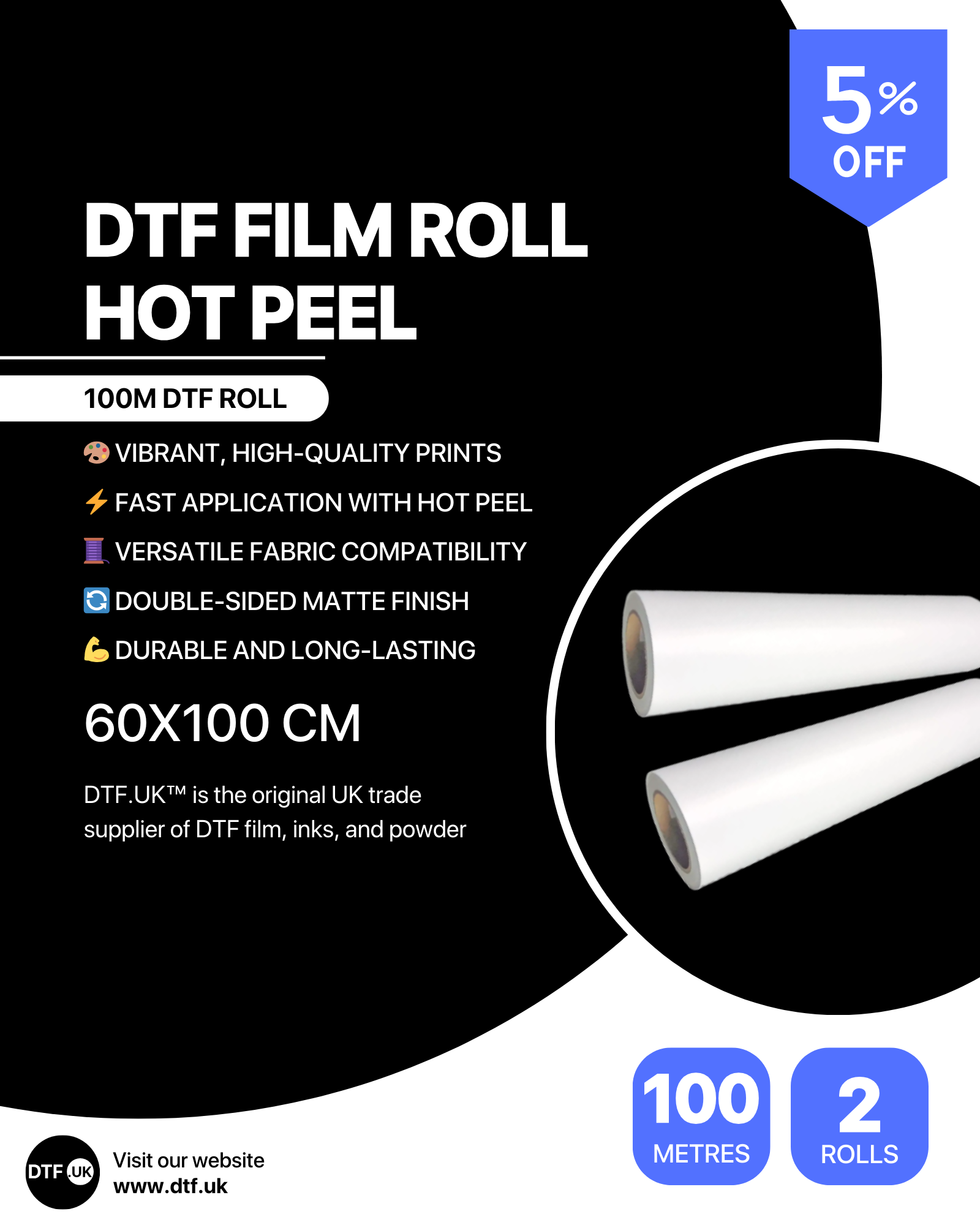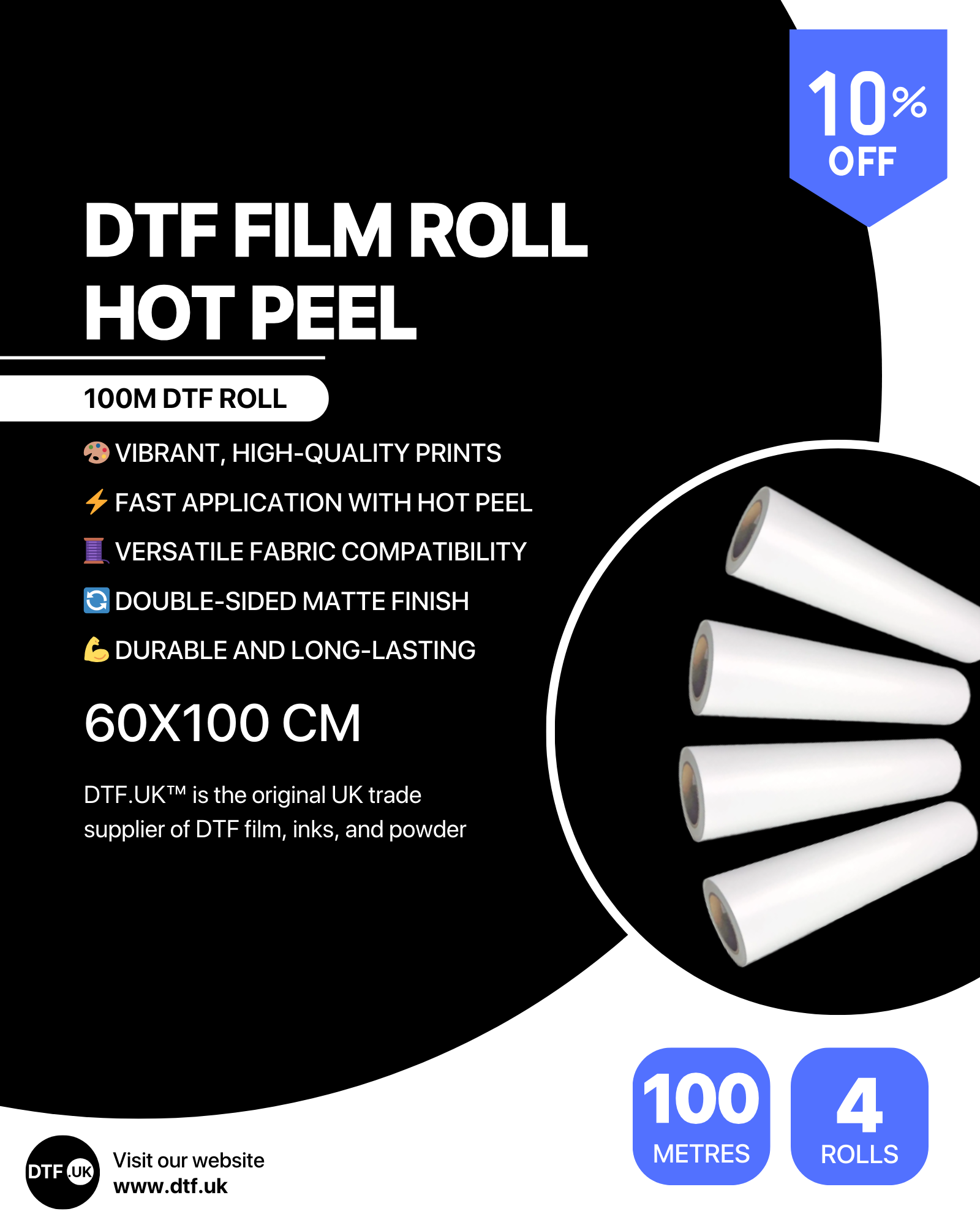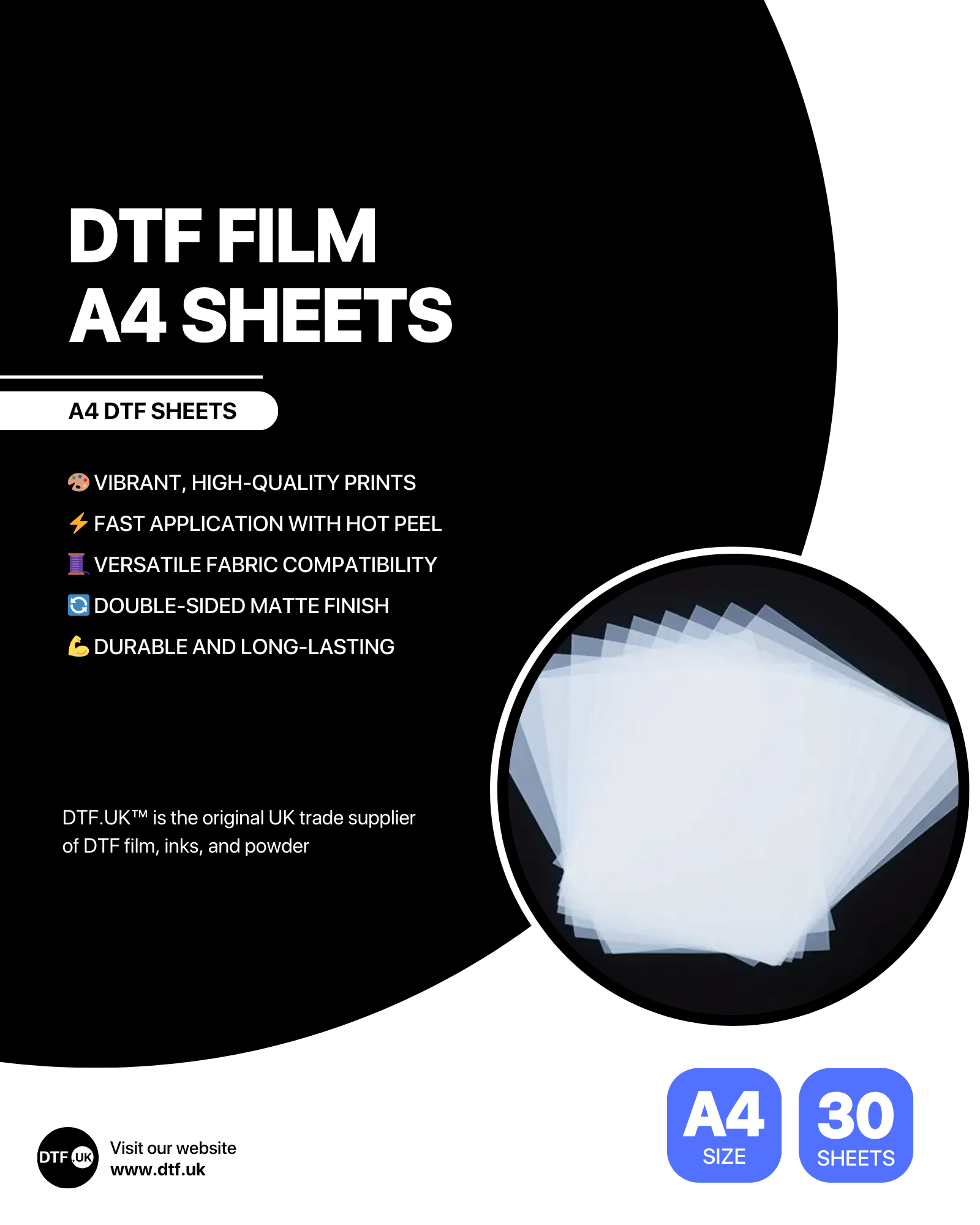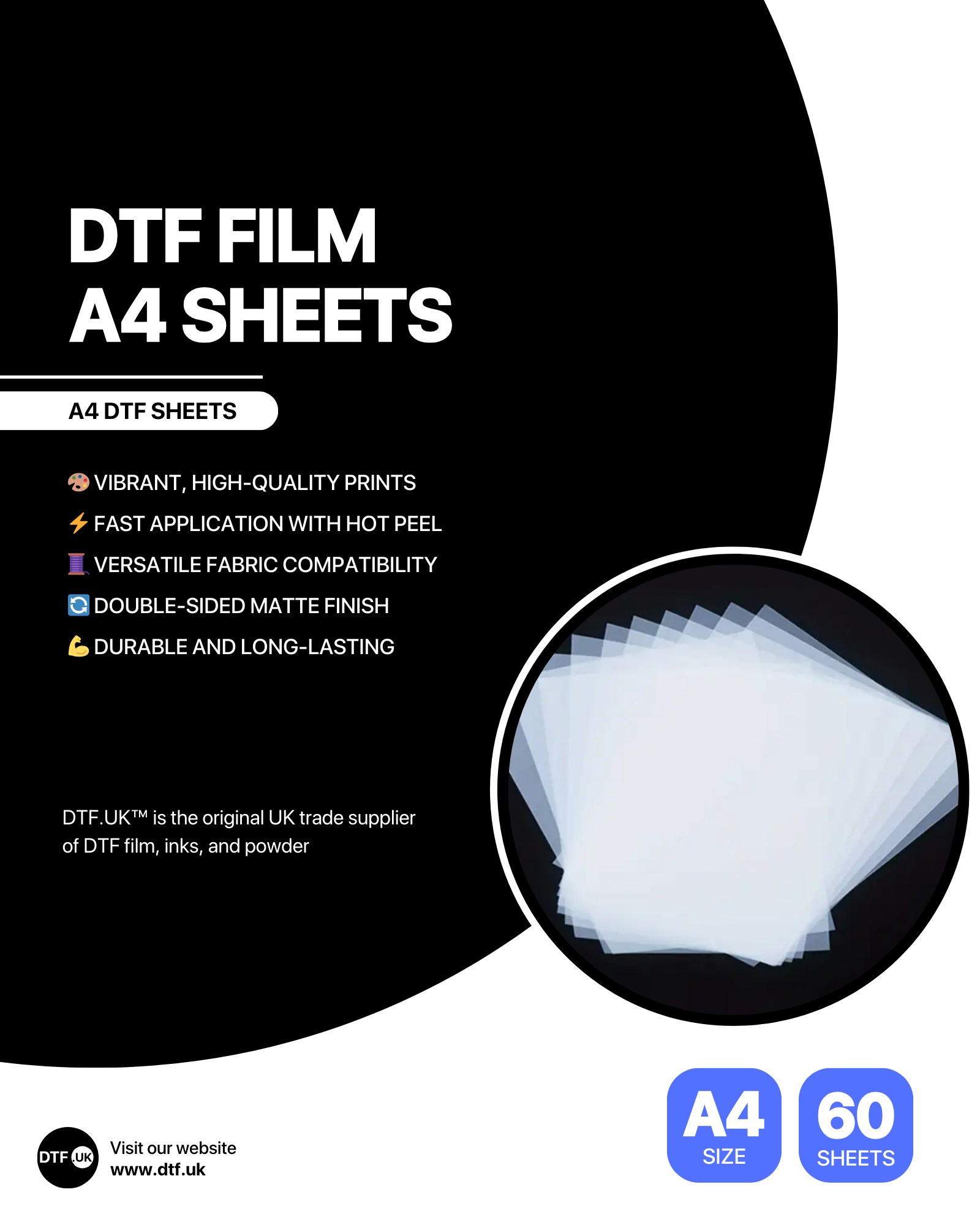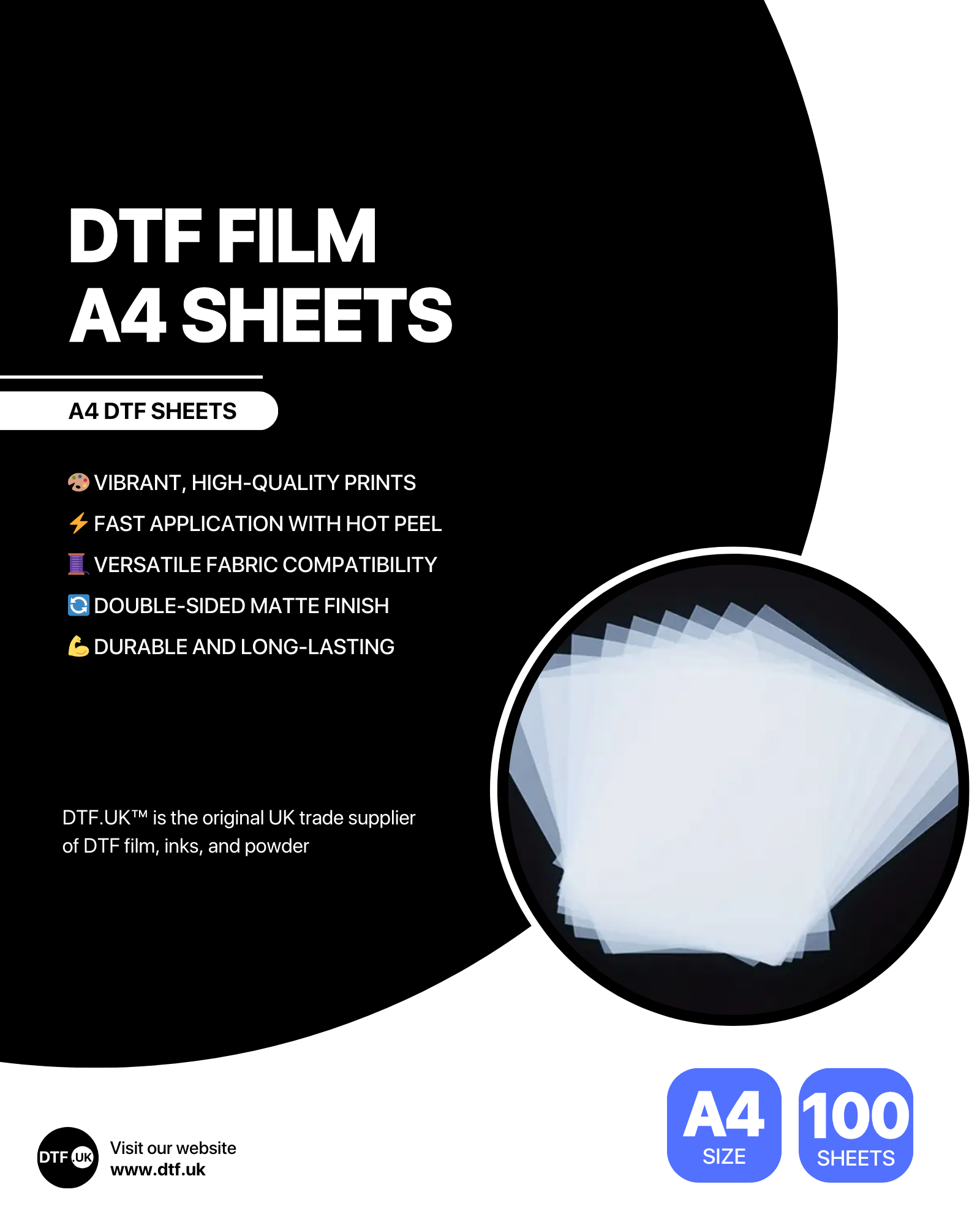DTF Film: Direct To Film Transfer - Instant Hot Peel & DTF Transfer Film
Direct to film, commonly known as DTF, is a revolutionary printing technology that has changed the textile and garment industries. Using a DTF printer and special DTF ink, designs are printed onto a DTF film, which then becomes a DTF transfer that can be applied to various fabrics with a heat press.
Introduction to DTF Film
What is DTF Film?
DTF film is a specialized PET film used in DTF printing, where designs are printed directly onto the film using a DTF printer and DTF ink. The DTF film acts as a transfer film, allowing the design, along with a DTF powder and white ink, to be heat pressed onto a garment.
Benefits of Direct To Film Technology
Direct to film technology offers numerous benefits, including printing on a wide array of textiles and vibrant colors. The DTF transfer process allows for printing on a wide array of textiles, unlike screen printing. The DTF printer ensures vibrant colors because of the DTF ink. With DTF printing, intricate designs with gradients are achievable, especially when using UV DTF technology.
Overview of Hot Peel and Instant Hot Peel
Hot peel films allow peeling immediately after heat transfer, speeding up production, with instant hot peel films designed for extremely quick peeling using premium quality materials, including white ink for vibrant results. Hot peel and instant hot peel films are types of DTF film designed for easy transfer, enhancing the overall printing solutions offered by suppliers. A hot peel DTF film allows for peeling the film immediately after heat transfer, speeding up production with premium quality results. Premium instant hot peel films are designed for extremely quick and effortless peeling.
Types of DTF Films
Matte vs. Glossy DTF Film
DTF film comes in two main finishes: matte and glossy. The choice between them depends on the desired aesthetic for the garment or textile being printed.
| Finish | Characteristics of premium quality DTF film include durability and vibrant color reproduction. |
|---|---|
| Matte | Non-reflective, subdued look, ideal for designs printed on premium quality heat transfer film. |
| Glossy | Vibrant, shiny finish, making colors pop. |
A4 vs. A3 DTF Film Sheets
DTF film sheets are available in various sizes. Selecting the right size ensures efficient use of the A4 DTF film during DTF printing. Here's a simple overview of the best DTF printing techniques available.
| DTF Film Sheet Size | Ideal Use |
|---|---|
| A4 | Suitable for smaller designs, especially when using A4 DTF film. |
| A3 | Ideal for larger graphics, providing ample space |
Double Matte DTF Film
Double matte DTF film offers enhanced grip and stability, promoting precise ink application. Double matte DTF film features a matte finish on both sides, offering enhanced grip and stability during the printing process. This type of printing film reduces slippage within the DTF printer, promoting precise ink application with DTF ink and ensuring a higher quality DTF transfer onto the chosen garment.
DTF Printing Process
Essential Equipment for DTF Printing
To begin with DTF printing, certain essential equipment is necessary. A dedicated DTF printer, DTF ink, DTF powder and a heat press are required for DTF printing. First, a dedicated DTF printer is required to print the design onto the DTF film. The choice of DTF printer depends on production volume and desired print quality. Secondly, DTF ink, specifically formulated for direct to film transfer printing, is crucial for vibrant and durable DTF transfer results. Finally, DTF powder and a heat press are also needed. Here's a summary of essential DTF printing equipment, including an DTF printer and high-quality DTF film.
| Equipment | Purpose of using high-quality DTF film in heat transfer printing includes achieving a supple finish on textiles. |
|---|---|
| DTF Printer | Prints the design onto DTF film using premium quality heat transfer film. Choice depends on production volume and desired print quality. |
| DTF Ink | Provides vibrant and durable results, especially when using the best DTF materials. |
Additionally, DTF powder and a heat press are also needed.
Step-by-Step Guide to DTF Transfer Printing
transfer printing involves several steps. The process includes printing the design, applying and curing DTF powder, heat transferring, and peeling the film. First, the design is printed onto the using a and . Next, is applied to the wet , acting as an adhesive. Excess powder is removed and the is cured. The is then heat transferred onto the using a . Finally, the is removed, revealing the design.
Understanding DTF Ink and Its Role
DTF ink is essential for vibrant, durable prints, adhering to DTF film and being compatible with the printer head and transfer powder. plays a critical role in the process. This specialized is formulated to adhere to and provide vibrant, durable prints on various s. The must be compatible with the head and the to ensure optimal transfer quality. Its unique composition allows for excellent color saturation and wash resistance.
Heat Transfer Techniques
Using Heat Press for DTF Transfers
A heat press is vital for fusing DTF powder and ink to the garment fibers with controlled heat and pressure. A is vital for effective s. The applies controlled heat and pressure, fusing the and to the fibers. Proper temperature and pressure settings are essential to ensure optimal adhesion and prevent damage to the or . A consistent heat transfer is key for a durable and high-quality result.
Hot Peel vs. Warm Peel Techniques
Hot peel involves peeling immediately after pressing; warm peel requires a brief cooling period. Heat transfer printing techniques are effective for removing the after heat transfer. With , the is peeled immediately after pressing, while still hot. Involves waiting a few seconds for the inktec to cool slightly before peeling. The choice depends on the specific and desired finish.
Cold Peel Methods and Their Applications
Cold peel allows the DTF film to cool completely before peeling, improving adhesion and preventing ink cracking, especially on delicate textiles. is a technique where the is allowed to cool completely before peeling. This method is often used with certain types of sublimation printers to improve adhesion and prevent cracking. can be beneficial for intricate designs or when printing on delicate s, ensuring a clean and durable DTF transfer with .
Choosing the Right DTF Products
Factors to Consider When Selecting DTF Film
Key factors include the textile type, desired finish (matte or glossy), size (A4 DTF film or A3), and peel properties (hot, cold, or warm). When selecting , several factors come into play. The type of being printed on is crucial, as some s adhere better to certain fabrics than others. Consider the desired finish – or glossy – and the size needed for your designs; whether or are appropriate. Evaluate the properties to consider , or options.
Comparing DTF Film Rolls and Sheets
Film sheets are suitable for smaller operations, while DTF film rolls are better for large-scale production, offering cost-effectiveness. Inkjet and sublimation printers both serve the same purpose in color transfer but cater to different production scales. Both inktec and white ink are suitable for smaller operations or individual projects, providing convenience and ease of handling. are better for large-scale production, offering cost-effectiveness and reduced downtime due to fewer reloads. Choosing between the two depends on your specific needs.
Recommended DTF Inks and Printers
Choosing the right DTF ink and inkjet printer is crucial for high-quality transfers; match ink to your printer model and printing film. Selecting the right and is crucial for high-quality s. Look for s specifically formulated for direct to film PET applications to ensure vibrancy and durability. Match the to your model and the printing film. Research options based on your desired print volume, resolution, and compatibility with different types.
Applications of DTF Transfer Film
Textile Printing and Fashion Industry Uses
DTF printing enables printing intricate designs on various garments, allowing customized apparel and promotional items. The and fashion industry benefit greatly from the versatility of . enables printing intricate designs directly onto various s, including cotton, polyester, and blends. Allows for customized apparel, promotional items, and personalized fashion pieces with vibrant colors and detailed graphics, surpassing the limitations of traditional printing solutions.
Custom Merchandise and Promotional Products
DTF transfers can be applied to items like bags and hats, creating personalized gifts and branded merchandise with durable prints. Beyond apparel, the best DTF printing expands possibilities for custom merchandise and promotional products. s can be applied to items like bags, hats, and other accessories, creating personalized gifts and branded merchandise. The heat transfer process ensures durable and long-lasting prints, making an ideal solution for businesses seeking to create unique and impactful promotional items using .
Advantages of DTF in Small Business Settings
DTF printing offers low setup costs, on-demand printing, and the ability to print intricate designs on textiles and other media, setting small businesses apart. For small businesses, offers numerous advantages. Its low setup costs make it accessible, eliminating the need for expensive equipment associated with other printing methods, making it one of the best DTF printing solutions available. Allows for on-demand printing with CMYK colors, reducing inventory costs and waste. The ability to print intricate designs with vibrant colors makes it ideal for creating custom apparel and merchandise, setting small businesses apart from larger competitors through DTF direct to film technology.
